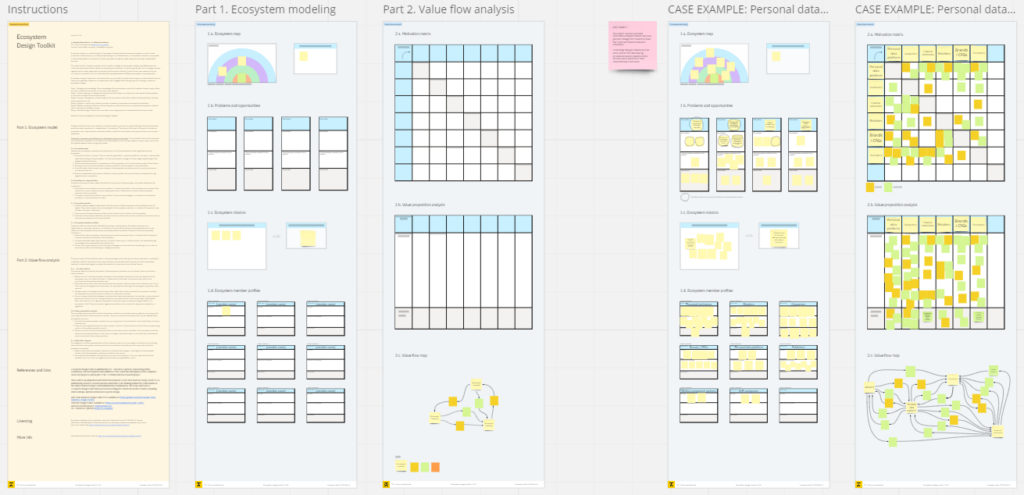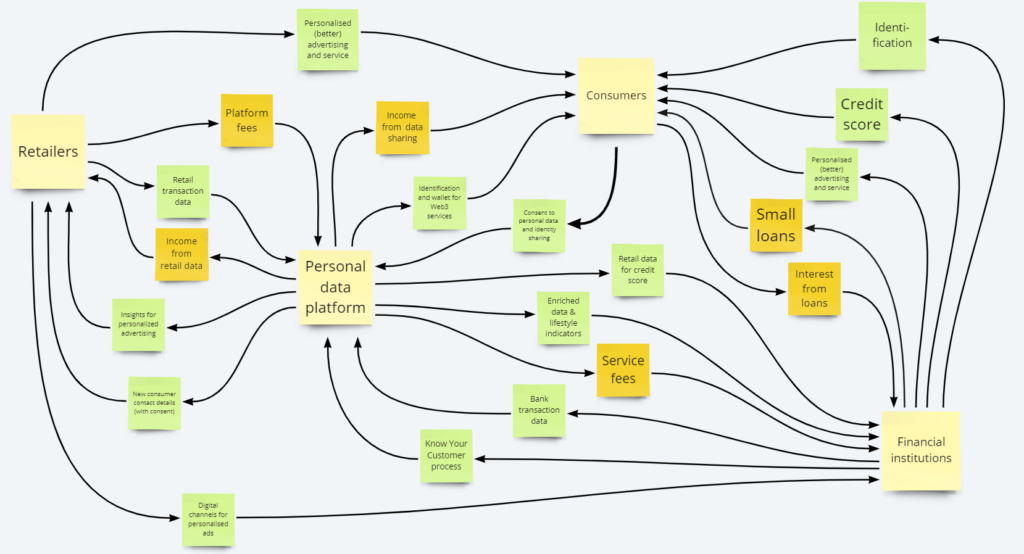2023-09-13

Marketing Lead at TX
Web3 technologies enable decentralized business models relying on collective ecosystems to create value among stakeholders. However, many projects struggle to create sustainable demand for their product and, ultimately, are forced to close doors once investor money runs out.
Ecosystem design is a process to help projects truly determine their core audience, incentivization models, and value flows to create a self-sustaining project. Web3 consultancy TX – Tomorrow Explored has pioneered the field and has now released its definitive ecosystem design toolkit on Miro to accelerate Web3 adoption.

To paraphrase Steve Jobs, designing a product begins with the customer experience, followed by the technology. In an ecosystem, customer roles become blurred as users or consumers are often active agents as well. Incentivizing users to be active is challenging in itself but even more so in a decentralized ecosystem.
“Instead of thinking about businesses with a B2B or B2C funnel, stakeholders range from A to Z. So, we have to understand what incentivizes both people and organizations to contribute within a decentralized ecosystem actively”, says TX’s Chief Design Officer Mikael Koskimaa and continues:
“Like any other product or service, we need to address Web3 projects from a human perspective. When the human layer has been understood and clarified, it also becomes a lot easier to define the appropriate technological solutions.”
An open ecosystem design toolkit to increase Web3 adoption
TX’s new ecosystem design toolkit has been released on the online workspace Miro. The toolkit mirrors the company’s ecosystem design process, and many of the selected tools are based on years of actual client work, academic ventures, and past design publications.
Some unique tools include the Problems and Opportunities canvas, which drills down on the issues and possibilities for each stakeholder group, and the Value Proposition analysis, which underlines the benefits each of them brings to the ecosystem.

“They may sound basic, but in the end, the simplest tools are always the most effective. Creating a robust ecosystem member profile is a major step toward positioning the project correctly to its audience. It sounds obvious that everyone should know their audience, but it isn’t as common as you might think,” explains Senior Designer Markku Nousiainen from TX.
The toolkit is released under a Creative Commons license and is available on the Miroverse.
Drop us a message to discuss your project
We’ll get back to you as soon as possible.
Find out more
For information on how we can transform your sector or business, please get in touch using the contact details below.





